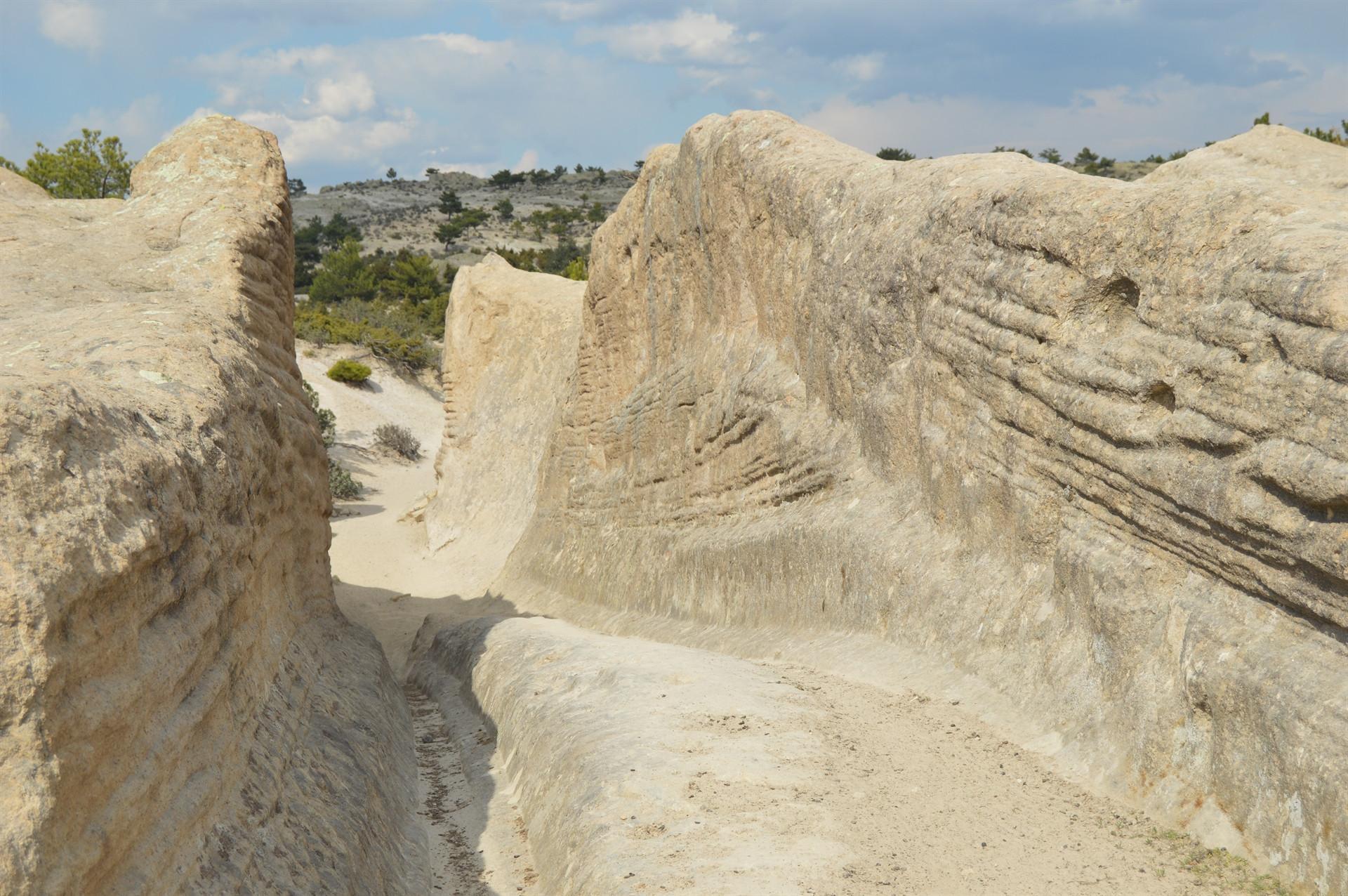
Located in the extensions of the Historical Phrygian Valley in İhsaniye district of Afyonkarahisar, the “Ancient Road” attracts the attention of geologists, archaeologists and art historians from all over the world with its geological structure and mysterious wheel traces that are two meters deep.
Situated in a wide geography in Eskişehir, Kütahya, Ankara and Afyonkarahisar, the 3,000-year-old Phrygia is known for its fairy chimneys formed by the effects of rain and wind in the tuff rock structure, carved rock tombs and monuments.
The historical Phrygian Valley, which has the appearance of a natural open-air museum, has been in the UNESCO World Heritage Tentative List since 2015.
The route, which is also known as the “king road” and located in the Göynüş Valley of Phrygia, was registered by the Culture and Tourism Ministry in 1994.
 The Ancient Road, which is formed by tuff cliffs and believed to have been used as a trade route in the region, reaches the Afyonkarahisar-Eskişehir highway.
The Ancient Road, which is formed by tuff cliffs and believed to have been used as a trade route in the region, reaches the Afyonkarahisar-Eskişehir highway.
Traces on the “king road,” formed by the abrasion of wheels and the highest point of which reaches two meters, attract the attention of local and foreign tourists coming to Phrygia, as well as geologists, archaeologists and art historians from around the world.
Claims by Russian scientist and geologist Alexander Koltypin that the wheel traces in the Phrygian Valley might have belonged to a gifted race that lived here 12-14 million years ago had stirred sensation in world media.
Speaking to the state-run Anadolu Agency, Provincial Culture and Tourism Director Mehmet Tanır said that various archaeological and geological studies were carried out at different times in Phrygia.
“Many archaeologists, geologists and art historians from different countries of the world and in Turkey come to the Phrygian Valley and carry out investigations. The rock structure and historical texture of the region are really interesting. In the following years, it will be possible to reach further data by deepening the research in this environment,” Tanır said.
Commercially efficient route
Stating that the rock settlements in the Phrygian Valley bear traces from the Hittites, Phrygians and Roman periods, Tanır said, “We know that the Hittites dominated Phrygia between 1,200 and 700 B.C. and the Phrygians in the 7th century. Due to the characteristics of this area, it was included in the UNESCO World Heritage Tentative List in 2015. It has recently become a center of attraction in terms of tourism. Like Cappadocia, there are many rock settlements in Phrygia. Especially the ‘Ancient Road’ located in Kayıhan [Göynüş] region is an important place. Just like today, Afyonkarahisar has been at the crossroads during the Phrygian, Roman, Seljuk and Ottoman empires in the historical period. In the Phrygian period, we see that this road was a commercially effective route, and it goes as far as Eskişehir and Kütahya with connection roads.”
According to the data they have, Tanır explained that the area on the road to Phrygia was dated to the lower Paleocene period and that the rock structure was formed 12-14 million years ago.
Stating that the deep traces on the Ancient Road are thought to have been formed by the wheels, Tanır said, “Göbeklitepe in [in the southeastern province of] Şanlıurfa is believed to be 12,000 years old. In Phrygia, the claims that ‘people lived here 14 million years ago’ does not seem very logical. Scientific data does not confirm this, too. We see that the claim ‘14 million-year-old traces’ made by Russian geologist Alexander Koltpyn, who conducted studies on these traces, in Phrygia, are not confirmed.”